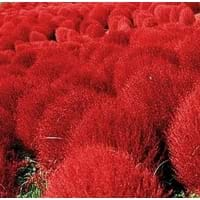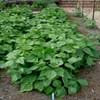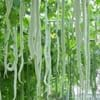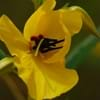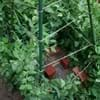Type
Vegetable
Ornamental Plants, Shrubs
Origin
Central America, South America
Eastern Europe, Western Asia
Types
Bush Beans, Pole Beans
Kochia Indica, Neokochia californica
Habitat
Cultivated Beds
gardens, Temperate Regions
USDA Hardiness Zone
Not Available
3-11
AHS Heat Zone
Not Available
12 - 1
Sunset Zone
A1, A2, A3, H1, H2, 1a, 1b, 2a, 2b, 3a, 3b, 4, 5, 6, 7, 8, 9, 10, 11, 12, 13, 14, 15, 16, 17, 18, 19, 20, 21, 22, 23, 24
A1, A2, A3, H1, H2, 1a, 1b, 2a, 2b, 3a, 3b, 4, 5, 6, 7, 8, 9, 10, 11, 12, 13, 14, 15, 16, 17, 18, 19, 20, 21, 22, 23, 24
Habit
Vining/Climbing
Upright/Erect
Flower Color
Lavender
Not Available
Flower Color Modifier
Bicolor
Bicolor
Fruit Color
Purple
Not Available
Leaf Color in Spring
Green, Purple
Light Green
Leaf Color in Summer
Green
Not Available
Leaf Color in Fall
Green
Gray Green, Burgundy, Crimson
Leaf Color in Winter
Not Available
Light Green
Plant Season
Spring, Summer, Fall
Fall
Sunlight
Full Sun
Full Sun
Type of Soil
Loam, Sand
Clay, Loam, Sand
The pH of Soil
Neutral, Alkaline
Acidic, Neutral, Alkaline
Soil Drainage
Well drained
Average
Bloom Time
Indeterminate
Summer
Tolerances
Drought
Drought
Where to Plant?
Container, Ground, Pot
Ground
How to Plant?
Seedlings
Stem Cutting, Transplanting
Plant Maintenance
Medium
Medium
Watering Requirements
Do Not over Water, Requires regular watering, Water evenly
occasional watering once established, Requires consistently moist soil
In Summer
Lots of watering
Moderate
In Spring
Moderate
Moderate
In Winter
Average Water
Less Watering
Soil pH
Neutral, Alkaline
Neutral
Soil Type
Loam, Sand
Well drained
Soil Drainage Capacity
Well drained
Loamy, Well drained
Sun Exposure
Full Sun
Bright direct sunlight
Pruning
Remove damaged leaves, Remove dead branches, Remove dead leaves
Pinch or prune as they grow to promote branching and bushiness, Remove dead branches
Fertilizers
5-10-10 fertilizer
All-Purpose Liquid Fertilizer
Pests and Diseases
Alternaria Leaf Spot, Anthracnose, Aphids, Armyworm, Bacterial Blight
Aphids, Mosquito
Plant Tolerance
Drought
Heat Tolerance, Humidity
Flower Petal Number
Single
Not Available
Foliage Texture
Coarse
Fine
Foliage Sheen
Matte
Matte
Attracts
Not Available
Butterflies, Leaf Hoppers
Allergy
Not Available
Eye irritation, Respiratory problems
Aesthetic Uses
Not Available
Beautification, Landscape Designing
Beauty Benefits
Beautiful Skin
For treating wrinkles, Making cosmetics, Removes dandruff, Skin cleanser
Edible Uses
Yes
Sometimes
Environmental Uses
Fixes Nitrogen
Provides ground cover
Medicinal Uses
Cancer, Diuretic, Homeopathy, Hypotensive, Miscellany
Diabetes, Hypotensive, Obesity
Part of Plant Used
Leaves, Seedpod, Seeds
Leaves
Other Uses
Used for making brown dye, Used in biomass, Used in in reviving woollen fabrics
Cattle Fodder, Sauces, Traditional medicine, Used for fragrance, Wood log is used in making fences
Used As Indoor Plant
Yes
No
Used As Outdoor Plant
Yes
Yes
Garden Design
Container, Edible, Herb, Vegetable, Vine
Groundcover
Botanical Name
PHASEOLUS vulgaris 'Purple King'
BASSIA scoparia
Common Name
String bean, Field bean, French bean
Burningbush, Kochia
In Hindi
String Bean
Bassia scoparia
In German
Bohne
Besen-Radmelde
In French
Haricot vert
Bassia scoparia
In Spanish
String Bean
Kochia scoparia
In Greek
Αμπελοφάσουλο
Bassia scoparia
In Portuguese
Feijão de corda
Bassia scoparia
In Polish
Fasolka szparagowa
Mietelnik żakula
In Latin
Gloria Bean
Bassia scoparia
Phylum
Magnoliophyta
Angiosperms
Class
Magnoliopsida
Magnoliopsida
Order
Fabales
Caryophyllales
Family
Fabaceae
Chenopodiaceae
Clade
Angiosperms, Eudicots, Rosids
Angiosperms, Eudicots
Tribe
Phaseoleae
Not Available
Subfamily
Faboideae
Camphorosmoideae
Number of Species
Not Available
Not Available
Importance of String Bean and Kochia
Want to have the most appropriate plant for your garden? You might want to know the importance of String Bean and Kochia. Basically, these two plants vary in many aspects. Compare String Bean and Kochia as they differ in many characteristics such as their life, care, benefits, facts, etc. Every gardener must at least have the slightest clue about the plants he wants to plant in his garden. Compare their benefits, which differ in many ways like facts and uses. The medicinal use of String Bean is Cancer, Diuretic, Homeopathy, Hypotensive and Miscellany whereas of Kochia is Diabetes, Hypotensive and Obesity. String Bean has beauty benefits as follows: Beautiful Skin while Kochia has beauty benefits as follows: Beautiful Skin.
Compare Facts of String Bean vs Kochia
How to choose the best garden plant for your garden depending upon its facts? Here garden plant comparison will help you to solve this query. Compare the facts of String Bean vs Kochia and know which one to choose. As garden plants have benefits and other uses, allergy is also a major drawback of plants for some people. Allergic reactions of String Bean are Not Available whereas of Kochia have Eye irritation and Respiratory problems respectively. Having a fruit bearing plant in your garden can be a plus point of your garden. String Bean has showy fruits and Kochia has no showy fruits. Also String Bean is not flowering and Kochia is not flowering . You can compare String Bean and Kochia facts and facts of other plants too.

